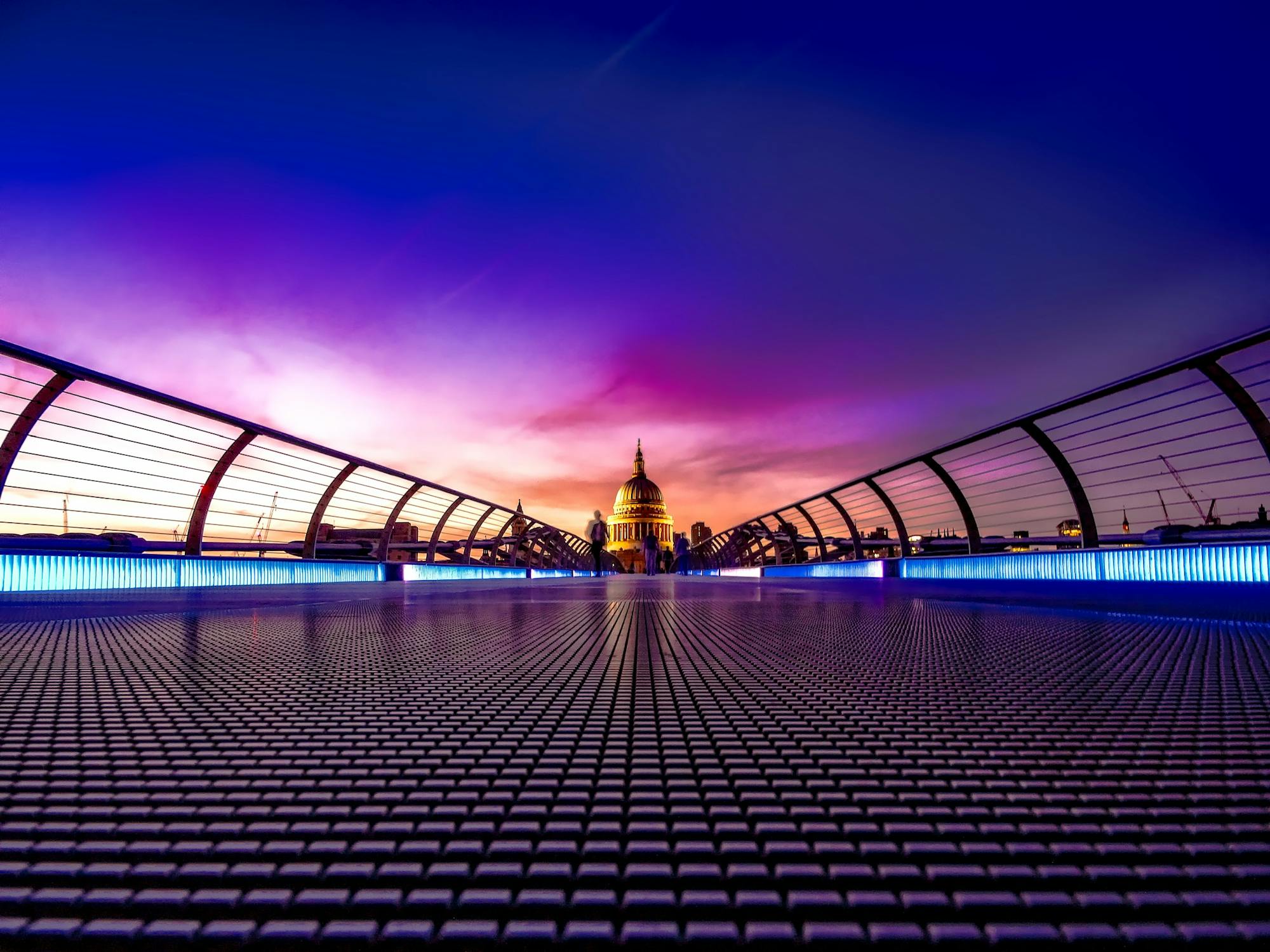Basic photography composition techniques form the foundation for creating visually appealing and impactful images
Rule of Thirds
The rule of thirds is a fundamental principle in photography and other visual arts that involves dividing an image into a grid of nine equal sections using two horizontal and two vertical lines. This grid creates nine equally sized squares and four intersecting points. The rule suggests that placing key elements of interest along these lines or at their intersections can create a more balanced, visually appealing composition.
By aligning subjects or points of focus with the gridlines or their intersections, you can create a more dynamic and engaging image. For instance, placing the horizon along one of the horizontal lines rather than in the center can add depth and interest to a landscape photo. Similarly, positioning a person’s eyes or a significant object at one of the intersections can draw the viewer’s attention and create a more visually striking composition.
While the rule of thirds is a helpful guideline for composition, it’s not a strict rule and doesn’t apply to every situation. Photography is an art form that allows for creativity and experimentation, so don’t be afraid to break the rule of thirds if it serves your artistic vision or if another composition technique better suits the mood or message you want to convey in your photograph.

Color

Fill The Frame
“Fill the frame” is a composition technique in photography that involves capturing a subject by filling the entire frame or a significant portion of it with that subject. The goal is to eliminate any distractions and draw the viewer’s attention solely to the main subject, emphasizing its details, textures, and intricacies.
When you fill the frame, you create a strong visual impact, allowing the subject to dominate the composition. This technique works particularly well with subjects that have interesting details or textures, portraits, close-up shots of objects, or even landscapes where a particular element deserves undivided attention.
By filling the frame, you eliminate unnecessary background elements and create a more intimate and immersive experience for the viewer. It’s a powerful way to highlight the subject’s essence and capture its finer details, enabling the viewer to engage more deeply with the image.
Remember, while filling the frame can be compelling, it’s essential to consider the context and balance of the composition. Experiment with different angles, distances, and perspectives to achieve the desired effect while ensuring that the subject remains the focal point of interest.

Framing

Simplicity
Simplicity in photography refers to the intentional act of keeping a composition uncluttered and focused on a single, clear subject or idea. It involves stripping away unnecessary elements that might distract from or diminish the impact of the main subject.
By emphasizing a single subject or a minimal number of elements within the frame, simplicity allows the viewer to easily understand and appreciate the photograph’s intended message or emotion. It often involves using negative space, clean lines, and uncluttered backgrounds to draw attention to the main subject.
Simplicity can be achieved in various ways:
Minimalism: Focus on a single subject against a plain or unobtrusive background, keeping the composition clean and uncluttered.
Isolation: Emphasize the subject by isolating it from distractions, using techniques like shallow depth of field or selective framing.
Negative Space: Use empty space intentionally to highlight the subject and evoke a sense of clarity or serenity.
Clean Lines and Shapes: Emphasize strong, simple lines or shapes in your composition to direct attention to the subject.
Limited Color Palette: Restrict the colors in the frame to create a sense of simplicity and harmony, allowing the subject to stand out.
Simplicity in photography doesn’t necessarily mean a lack of complexity or depth; rather, it’s about focusing on what’s essential and conveying a clear and impactful message through a well-composed image. It often leads to powerful, evocative photographs that resonate strongly with viewers.

Less is more.
Symmetry
Symmetry in photography involves creating balance and harmony by capturing subjects or scenes that exhibit a mirrored or balanced arrangement around a central axis. It’s a compositional technique where the elements on one side of the image are mirrored or nearly identical to those on the other side.
There are a few types of symmetry commonly seen in photography:
Reflection Symmetry: This occurs when a scene is reflected perfectly, such as in a body of water or a mirror, creating a mirror image along a horizontal axis.
Rotational Symmetry: Here, elements are arranged around a central point, creating a circular or radial pattern where each section mirrors the others.
Bilateral Symmetry: This involves a division of the scene into two equal halves that mirror each other along a vertical or horizontal axis.
Photographers often use symmetry to create visually appealing and balanced compositions. It can evoke a sense of order, tranquility, and perfection. Here are some tips for using symmetry effectively in photography:
Finding Patterns: Look for naturally occurring patterns, architectural details, or scenes with repetitive elements that naturally lend themselves to symmetry.
Centering the Subject: Place the central axis of symmetry in the middle of the frame to emphasize balance and equal weight on both sides.
Play with Reflections: Utilize reflections in water, glass, or other reflective surfaces to create symmetrical compositions.
Using Leading Lines: Symmetrical elements can also act as leading lines, drawing the viewer’s eye toward the center of the image.
While symmetry can create visually striking images, breaking away from perfect symmetry or introducing subtle asymmetry can add interest and make the photo more dynamic. Experimenting with angles, perspectives, and compositions within symmetrical scenes can lead to unique and captivating photographs.

Straight Horizon

Leading Lines
Leading lines are a powerful compositional element in photography that guide the viewer’s eye through an image. They’re typically lines or shapes within a photo that naturally lead the viewer’s gaze towards the main subject or a specific focal point.
These lines can take various forms—straight, curved, diagonal, or even implied through a series of elements like roads, paths, fences, buildings, or any repeating patterns. The key is that they create a visual pathway that draws attention towards the main subject or point of interest in the photo.
When using leading lines, consider how they interact with the composition. Diagonal lines, for instance, can create a sense of movement and dynamism, while curved lines might add a softer, more organic flow to the image. Leading lines can also add depth and dimension, guiding the viewer’s eye from the foreground to the background of the photo.
Photographers often use leading lines to create a sense of depth or to emphasize perspective. They can be a great tool for storytelling, guiding the viewer’s narrative within the frame.
Experimenting with different angles, perspectives, and types of leading lines can significantly impact the visual impact of your photographs, allowing you to create more compelling and engaging compositions.

Perspective
Perspective in photography refers to the way objects appear in a photograph based on their spatial relationships and the point of view from which the photo is taken. It involves the relative size, position, and scale of elements within the frame, giving the viewer a sense of depth, distance, and dimension.
There are two main aspects of perspective in photography:
Spatial Perspective: This refers to how objects appear to change in size or distance based on their position in relation to the camera. Objects closer to the camera generally appear larger, while those farther away appear smaller. This effect, known as foreshortening, creates a sense of depth and distance in an image.
Linear Perspective: This involves the use of converging lines or vanishing points to create a sense of depth and distance. When parallel lines (like railroad tracks, building edges, or streets) appear to converge as they recede into the distance, it creates the illusion of depth, guiding the viewer’s eye towards a vanishing point.
Photographers often manipulate perspective intentionally to convey a particular feeling or message in their images. Different perspectives can evoke different emotions or emphasize certain elements within the frame. For instance, a low angle perspective, where the camera is positioned closer to the ground, can make subjects appear more dominant or powerful. On the other hand, a high angle perspective, shot from above, can make subjects seem smaller or more vulnerable.
Changing the perspective by moving closer or farther away from the subject, using different lenses, adjusting the angle of view, or exploring unique vantage points can significantly impact how the viewer perceives and interprets the photograph. Understanding and manipulating perspective is a crucial aspect of photography that allows photographers to create visually compelling and impactful images.

Remember, while these basic photography composition techniquesserve as guidelines, experimentation and creativity are key in photography. Don’t hesitate to break these rules if it serves your artistic vision and helps convey the message or emotion you want in your images.